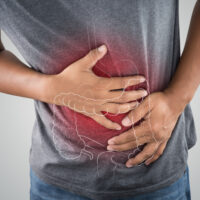An Overview Of Tooth Pain And The Treatment Options
An overview of tooth pain and the treatment options
The root cause of tooth pain is avoiding the routine visits to the dentist. This fear is not necessary as dentistry has progressed by vast leaps and bounds in recent times. Except for the sound of drilling, it isn’t very unpleasant to get a checkup from a dentist these days.

A good oral hygiene habit, regular dental check-ups, and necessary timely remedial measures pay off in the long run.
Sometimes, tooth pains or toothaches hit you out of nowhere and catch you unaware. Below is some information to help you understand a toothache you are experiencing and what you could do to feel better.
What is a tooth pain?
- A mild pain is the first indication that the enamel of a tooth is damaged and that oral fluids are seeping into the pulp cavity.
- All the tooth pain does not necessarily indicate caries or tooth decay. It can sometimes be reflected pain from elsewhere.
- Many a time sensitivity is the first indication of tooth decay, although not necessarily always.
What can be done at this stage to control the damage?
- It is essential to visit your dentist right away the moment you experience tooth pain or any sensitivity in the teeth.
- The dentist will examine your teeth and gums.
- A brown soft material on the enamel indicates the onset of caries. This would be removed and, if required, a filling will be used.
- The dentist may recommend a tooth-repair toothpaste. In severe cases, a fluoride coating may be done.
What are the risk factors for a toothache?
- Poor oral hygiene caused by not brushing the teeth twice a day, especially, after dinner.
- Skipping routine dental checkups and timely treatments.
- Diets rich in carbohydrates and sugars. These foods are fodder to the oral bacteria.
- Lack of fluorides in a diet. In many countries, fluorides are added to the food and the drinking water supplies.
- Insufficient saliva in the mouth is a surprising risk factor. Saliva has a large function in preventing tooth decay. A large supply of saliva keeps the mouth washed and hydrated, removing acid, food remains, and bacteria.
- Diabetes.
- Smoking, breathing secondhand smoke, and spitting tobacco lead to tooth decay.
- Babies are at a higher risk of tooth decay, as their teeth aren’t fully developed. Milk pooling in mouth produces acid, damaging their teeth.
- A baby’s mouth gets infected with bacteria if spoons, straws, etc. used by adults are used for the babies without washing them properly.
How is tooth pain diagnosed and treated?
- If one is going to the dentist for the first time, the dentist will take a detailed patient and family history, apart from the details of the teeth problems. That itself will give the dentist an insight into the problem and a possible diagnosis immediately.
- The dentist will then proceed with a physical examination of mouth with a probe with a sharp end and a small mirror. He/she would scratch off the brown tissue on the tooth. If there is pain or sensitivity then it might mean the tooth has a decay.
- The dentist would proceed to tap the tooth with the rear end of the probe. If tooth pain is felt then that might mean that particular tooth has a cavity.
- The nature and severity of pain often tell the dentist the depth of the issue and the required treatment. Sometimes, an X-ray of the mouth is also taken for the dentist to better understand the cause of the pain.
- Based on the diagnosis, the dentist will decide on a tooth pain treatment plan, such as a root canal, an extraction, gum surgery, etc.
What is a root canal treatment?
- There are four different types of teeth. Starting from the middle and moving to right lie the two incisors, one canine, two premolars, and three molars. The dentist marks them out with a cross, as the two areas in the upper halves and the two areas in the lower halves. Each area has a specified number of roots.
- In root canal treatments, the dentist opens up the pulp cavity by drilling from the top under a local nerve block. The pulp chamber and root canals are thoroughly cleaned and treated for an infection, if present, and when there is no discharge, the chamber is cleaned and filled up.
- Root canals and pulp cavity are filled up tight with preformed, standard-sized cones of “gutta-percha”, also called the GP points, which is an inert material.
- The recent development in the dental care treatments includes implanting sockets in the jaw and screwing artificial teeth into them.
Disclaimer:
The content provided on our blog site traverses numerous categories, offering readers valuable and practical information. Readers can use the editorial team’s research and data to gain more insights into their topics of interest. However, they are requested not to treat the articles as conclusive. The website team cannot be held responsible for differences in data or inaccuracies found across other platforms. Please also note that the site might also miss out on various schemes and offers available that the readers may find more beneficial than the ones we cover.





